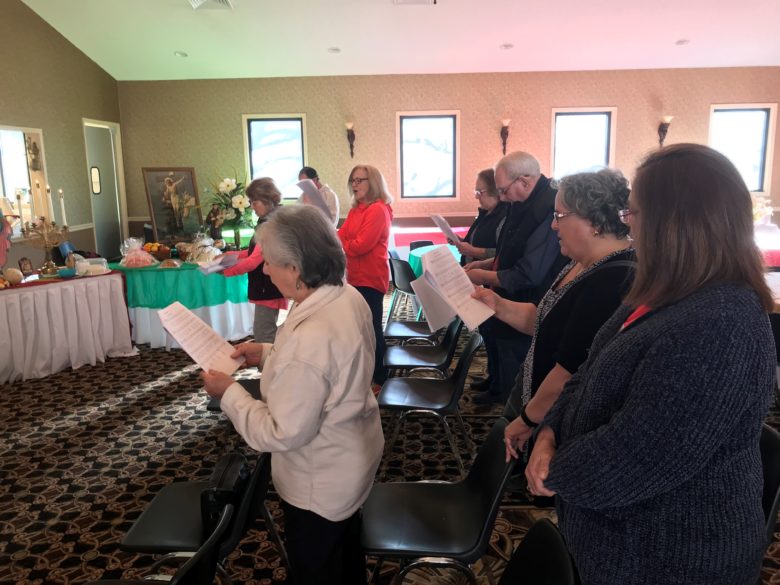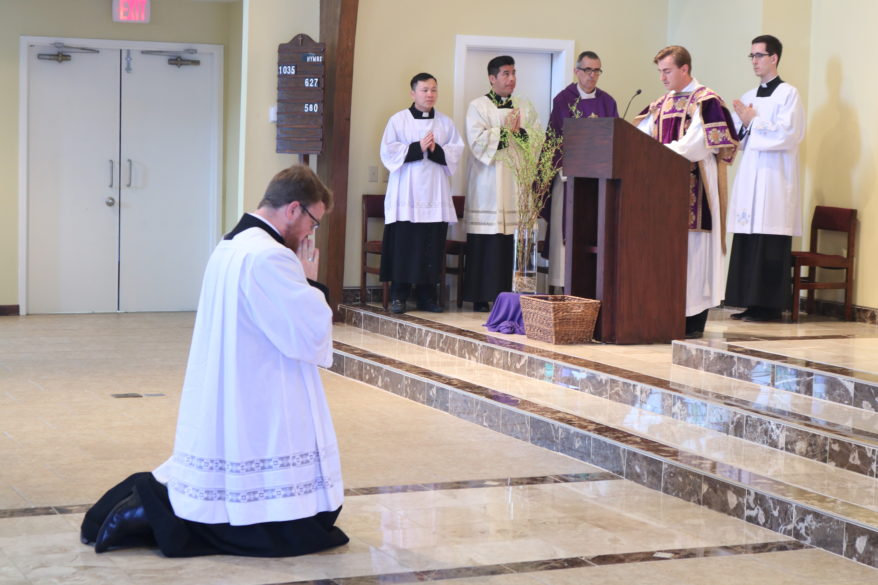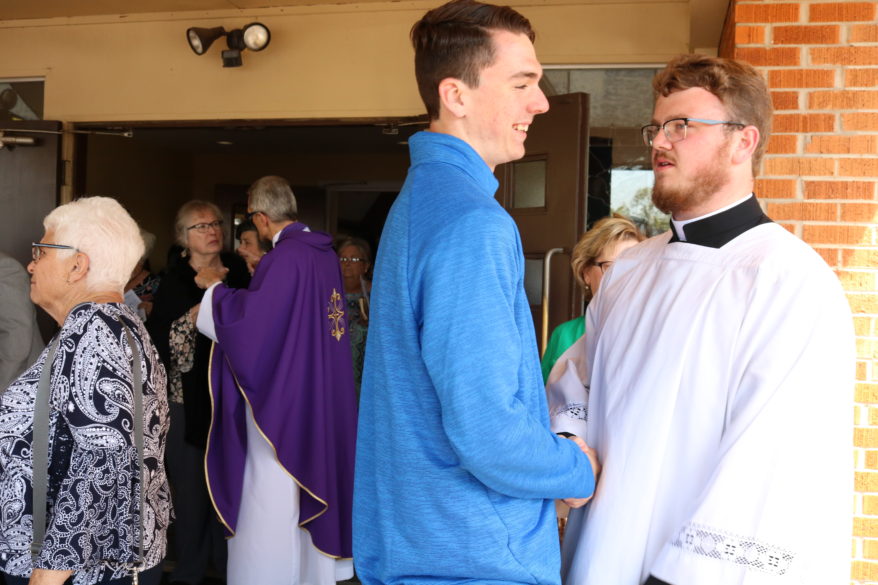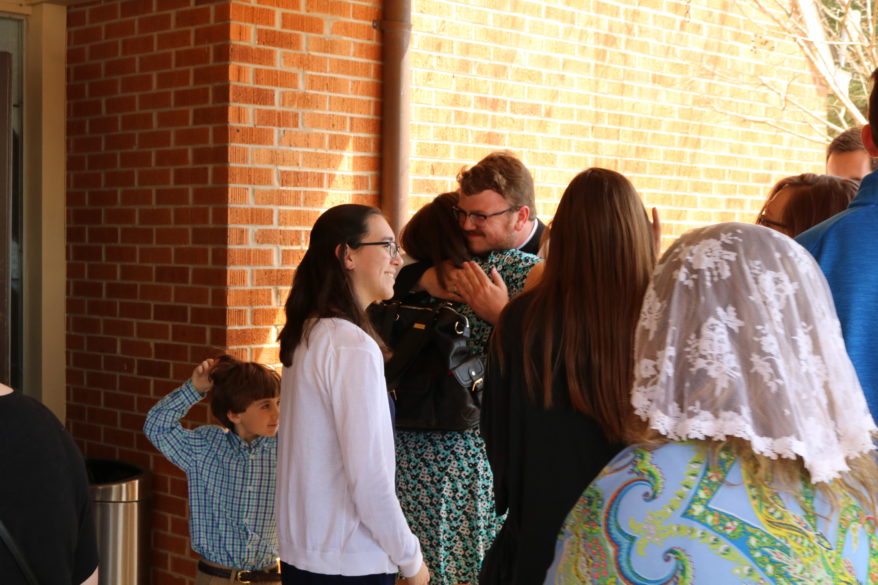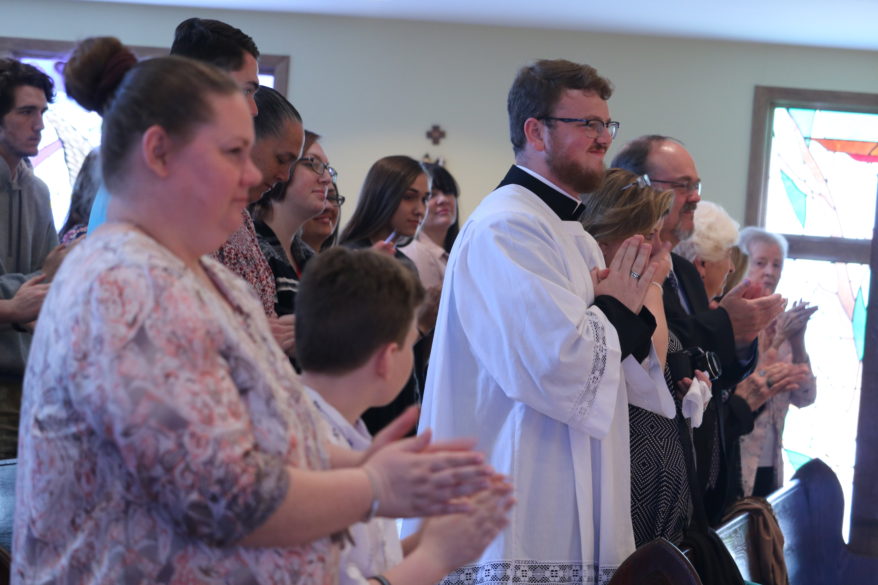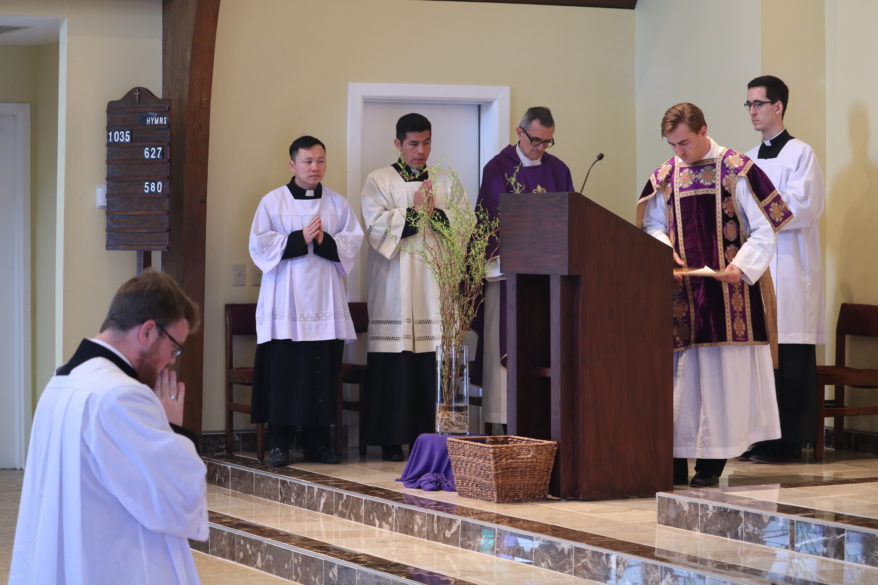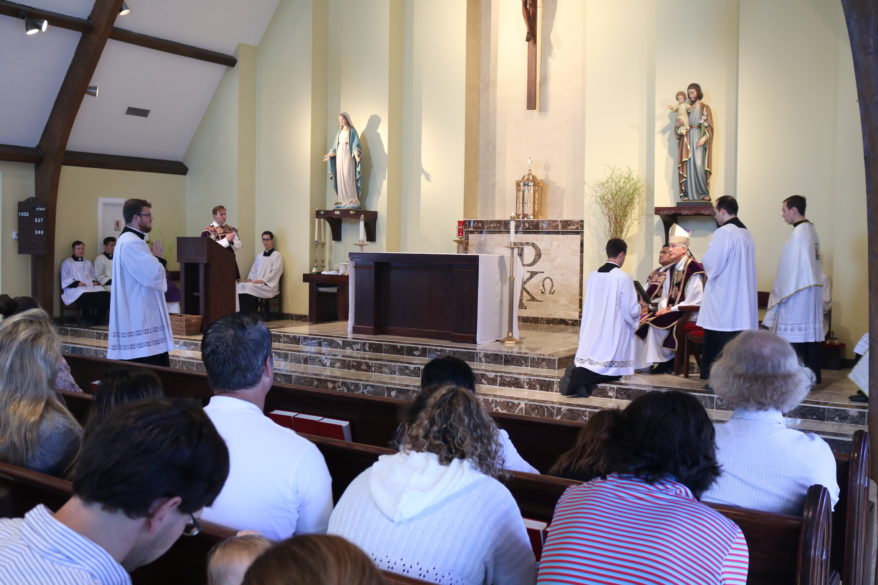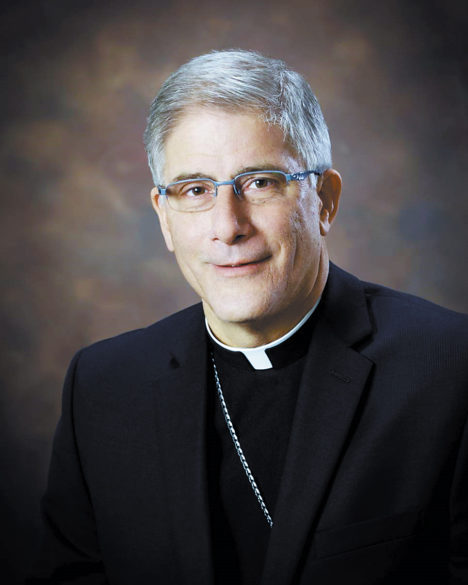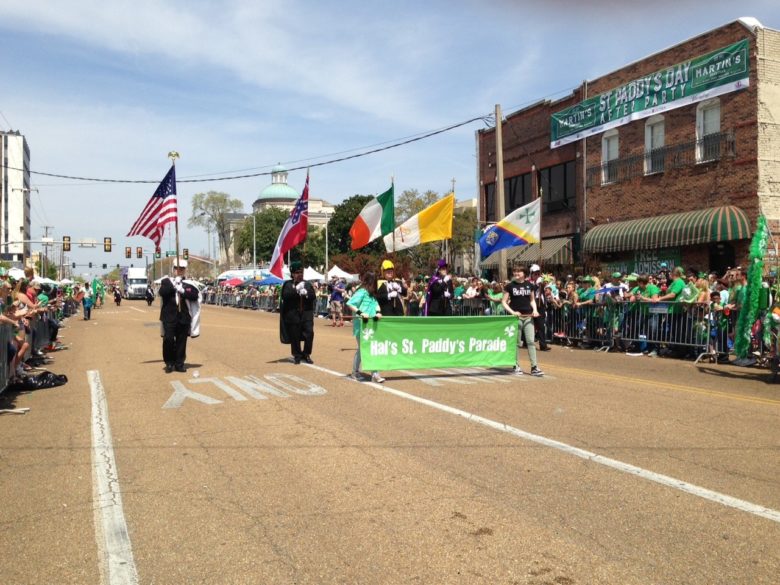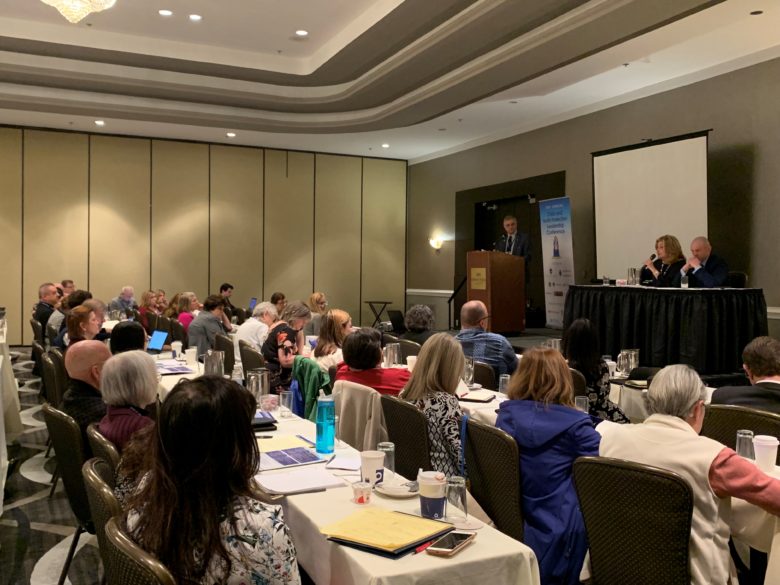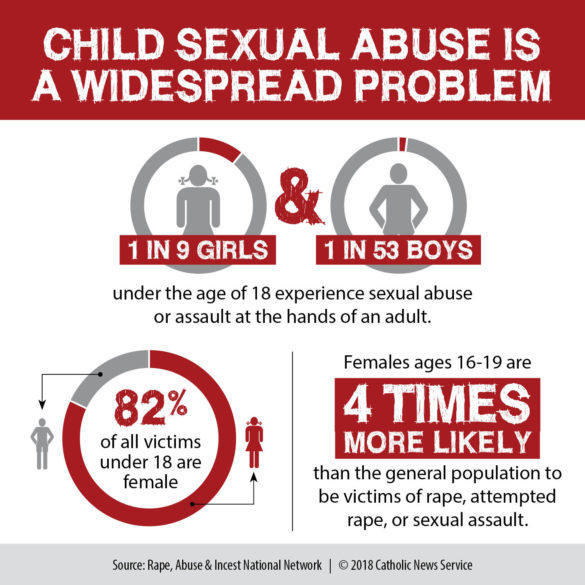By Abbey Schuhmann
COVINGTON, Louisiana – On Saturday, March 23, more than 200 youth and adults from around the Diocese of Jackson loaded four charter buses and made their way to St. Joseph Abbey and Seminary College for the 2019 Abbey Youth Festival (AYF). Additional parishes made trips on their own to the festival as well; the diocese was well represented with more than 300 youth and adult participants attending the one-day conference in south Louisiana.
After four straight years of rain, mud and even catastrophic flooding in 2016 which cancelled the entire event, the weather was perfect and the skies were blue; it was a sunny, 70 degrees on the AYF field. The theme for the day was “Restored – Let Your Heart Be Filled.” The seminarians at St. Joseph Seminary College play a vital role in the production of AYF including the diocese’s own, Tristan Stovall of Philadelphia Holy Cross. “The Abbey Youth Festival is an apostolic service of Saint Joseph Abbey and Seminary College.” The mission statement for Abbey Fest declares that “it is designed to provide young people with an opportunity to experience a day of prayer and faith formation with an exposure to the Benedictine traditions. Its focus is evangelization and vocational discernment by means of liturgy, prayer, worship, music and education appropriate for Catholic young people.” The festival has grown over the years; this year’s festival brought in more than 2,500 young people from Louisiana, Texas, Alabama, Florida, Georgia and Tennessee. The festival boasts a packed schedule that includes faith-filled music, prayer, catechesis, fellowship and fun.
A new addition to the program this year was a talent show featuring youth versus seminarian acts including a panel of judges. Richard Smallwood of Flowood St. Paul and Anna Trautman and Hannah Hoang of Amory St. Helen were the selected youth acts to perform on stage. Trautman and Hoang performed a beautiful rendition of Lauren Daigle’s song “You Say” while Smallwood entertained the crowd with a reenactment of the classic campaign speech dance from the movie Napoleon Dynamite.
Other acts from seminarians included fire breathing and a dance-off battle. Smallwood took home the grand prize for his performance. The program featured inspirational keynote presentations from Father Sidney Speaks and Sister Josephine Garrett. Danielle Nicole presented the breakout session for the women while Dom Quaglia led the session for men. The Sarah Kroger Band entertained the crowd with an evening concert and led worship music throughout the day.
All participants had the opportunity to visit different vendor booths including religious orders and communities from all around the country. Many teens and adults also take advantage of the sacrament of Reconciliation. Archbishop Gregory Aymond of the Archdiocese of New Orleans celebrated the Mass with Bishop Kopacz for the second year in a row. Bishop Kopacz has made several trips to Abbey Youth Fest since his installation as bishop for the diocese. The day concluded with candlelight adoration and praise and worship.
AYF is an excellent opportunity for teens to see the bigger church and enjoy fellowship with other young Catholics from all across the South. This was the ninth year for the diocese to sponsor a trip to the Abbey Youth Festival.
Make plans to participate in the 2020 event scheduled for Saturday, March 21. For more information visit www.abbeyyouthfest.com, on Facebook at “Abbey Youth Fest” or contact Abbey Schuhmann in the Office of Youth Ministry – 601-949-6934 or Abbey.Schuhmann@jacksondiocese.org
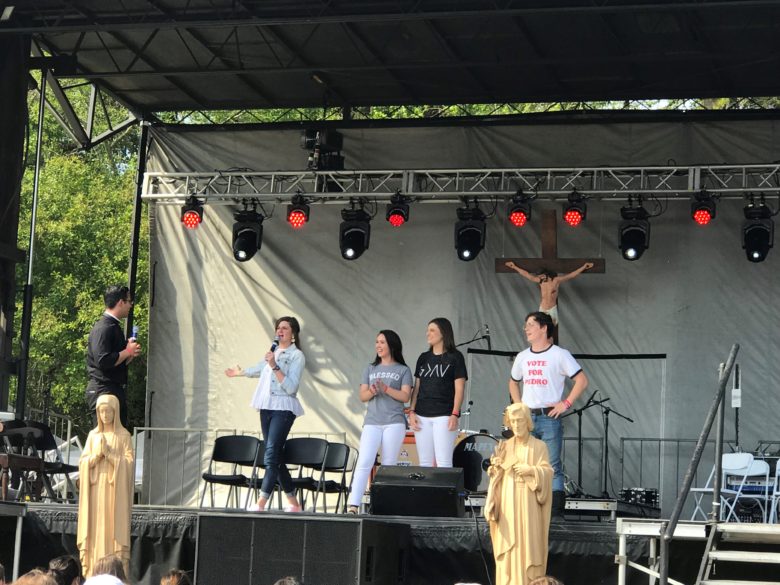
Two finalists in the talent show were from the Diocese of Jackson including Anna Trautman and Hannah Hoang of Amory St. Helen, center, and Richard Smallwood from Flowood St. Paul, who won the competition. (Photo by Abbey Schuhmann) 
Young people are invited to consider a religious vocation. (Photo by Patti Greene) 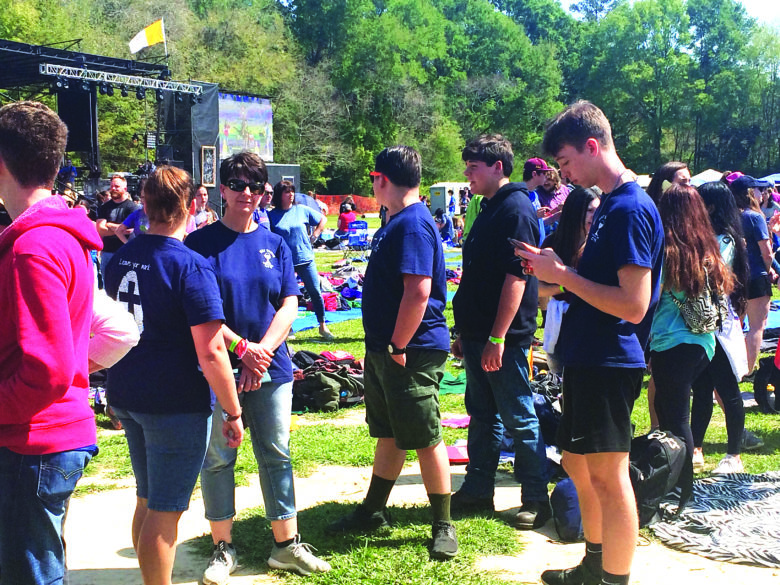
Hunter Yentzen, center, with the youth group from Clinton Holy Savior Parish at Abbey Youth Fest.

